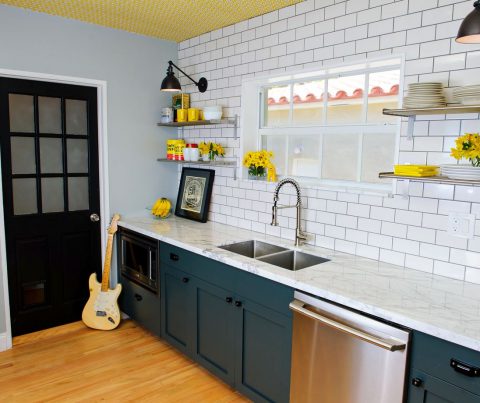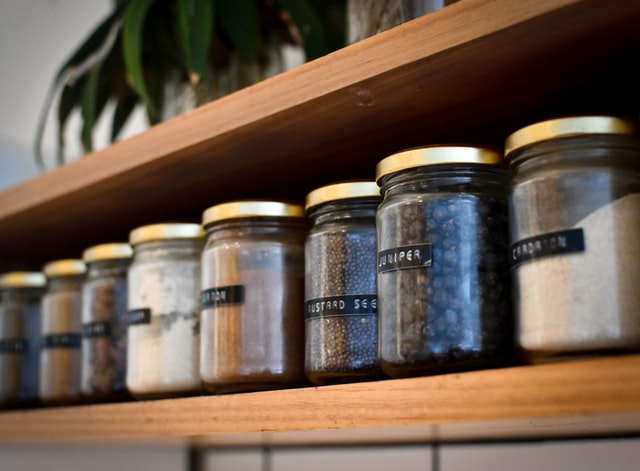It’s finally time — you’re redoing your kitchen. Whether it’s a complete overhaul or an update of a specific element, you’re going to come away with a modernized, fresh space that you love and that works for you.
One of the biggest items to consider in your renovation will be choosing a countertop. This applies both aesthetically and practically, since your chosen material will play into the design and be a place where you prep, cook and potentially eat, too.
In other words, you should think long and hard to ensure you’ve found the material that works best for you and your kitchen. To make that process easier, here are seven things to consider as you shop for the perfect countertop.
1. How Much Can I Spend?
Your search for countertops shouldn’t start on Pinterest or at the granite depot down the road. Instead, you should budget your entire remodel before shopping. First, you have to figure out how much you can spend on your kitchen. Of course, you should look at your finances and see how much money you must dedicate to the project. Then, consider how much time you plan to spend in the home and how much value you want to put back into the space.
From there, figure out how much you can dedicate specifically to your countertops. Whatever number that is, you must stick to it. There’s nothing more stressful than going over your chosen budget or, even worse, being house poor and having to pay off your overspending for years to come.
2. How Much Material Do I Need?
Next, measure your kitchen and figure out how many square feet of countertop you’ll need to complete the space. If you’re switching out the layout during your renovation, ask your contractor for an estimation as to how much material you’ll need. Something may seem budget friendly, but if you need a lot of material, then your chosen countertop could break the bank.
3. Who Uses the Kitchen?
Are you the queen of takeout, or are you a culinary master? The amount of wear-and-tear your countertops will face should be a significant factor in your search. If you’ve got a rambunctious crew of kids breezing in and out of the kitchen, for example, you want something sturdy enough to withstand scratches and cracks. But if you’re dedicated to maintaining that precious slab of stone at all costs, something more delicate could still work.
4. What’s the Maintenance?
In a similar vein, your chosen countertop will likely need some sort of maintenance from time to time, especially if it’s a natural material. A natural wood countertop, for instance, might require you to apply an oil sealant every six month to a year. Some types of stone need an annual sealant as well.
But there are some exceptions to the rule. Take granite as an example. There’s a reason why this stone is so popular — it barely requires any maintenance. Instead, you can wash it with warm water and a mild detergent. It’s just up to you to wipe away any liquids or moisture that falls on your countertop. Otherwise, it’ll be preserved, which could make it the right stone for your home.
5. Is it Eco-Friendly?
For many homeowners, this is an important question to ponder. Rather than taking a raw material and resource and putting that into your kitchen, you might prefer something that’s easier on the earth. Potential options include recycled glass, which is pressed together to create a strong, shiny surface. Reclaimed wood and paper can even be used as a surface for cooking prep. However, some of these materials require more maintenance than their more traditional counterparts, so be sure to ask questions before you sign off on a recycled material.
6. What’s Your Design Vision?
Kitchen trends change every year. And, while the design tide is always turning, it’s up to you to choose a material that fits the look and feel you envision for your space.
For instance, it might be worth spending a bit more on a sleeker, shinier slab of stone if you hope to create a modern-looking culinary hub. Plus, if you have sparkling countertops like these, you don’t need to spend as much to design the rest of the space — you’ll already have a focal point.
Otherwise, piece together a color-and-material palette to make sure your countertop material fits in with everything else. Paint chips, floor samples, cabinet materials, backsplash and, of course, your countertops should all work together without being monochromatic.
7. Can You Mix Materials?
This is another design-based question to consider, but it could fix any budgetary woes you’re experiencing about an expensive material you love. One way that homeowners have solved that problem in the past is by, for instance, using one countertop on their island and another on the space above their cabinets. A butcher’s block costs less for the former and is functional — it would free up some money to spend more on the rest of your counters.
To that end, mixing materials is definitely in style, and it would add interest to your kitchen’s overall look. If you’re struggling to figure out how to make your dream material work, this could be your solution: buy it, but don’t buy all of it.
With a thoughtful planning process, materials search and design vision, you’re sure to land on the perfect countertop for your space. So, get started now to take your kitchen’s look, feel and functionality to the next level ASAP. You’ll be glad you did.



